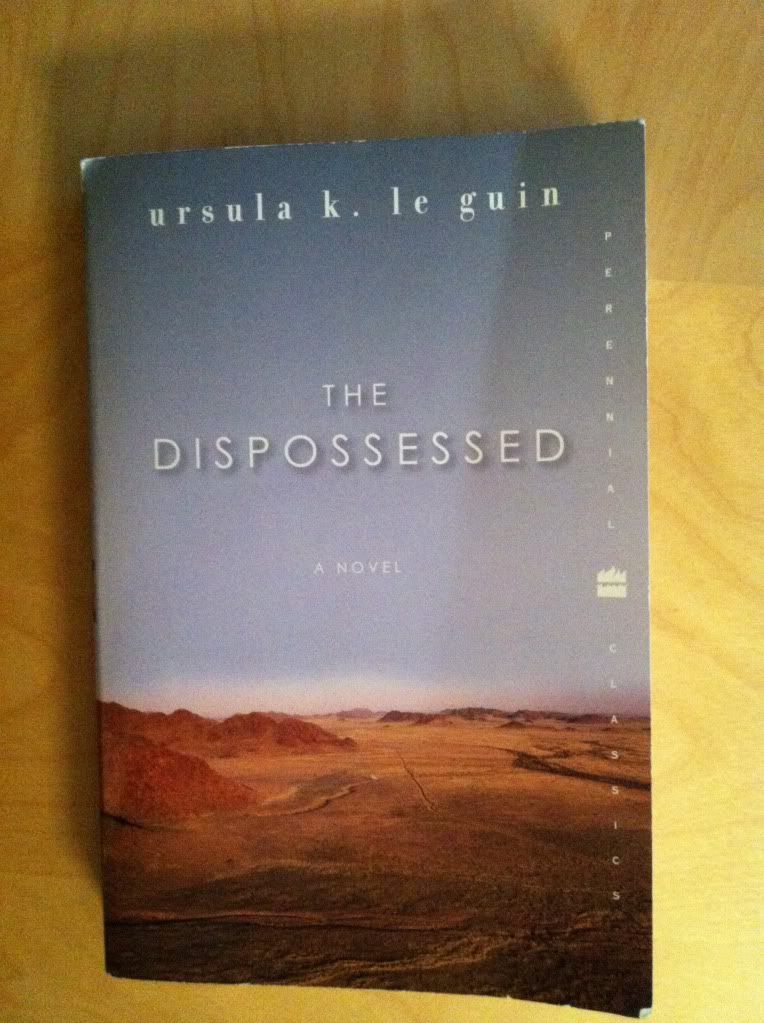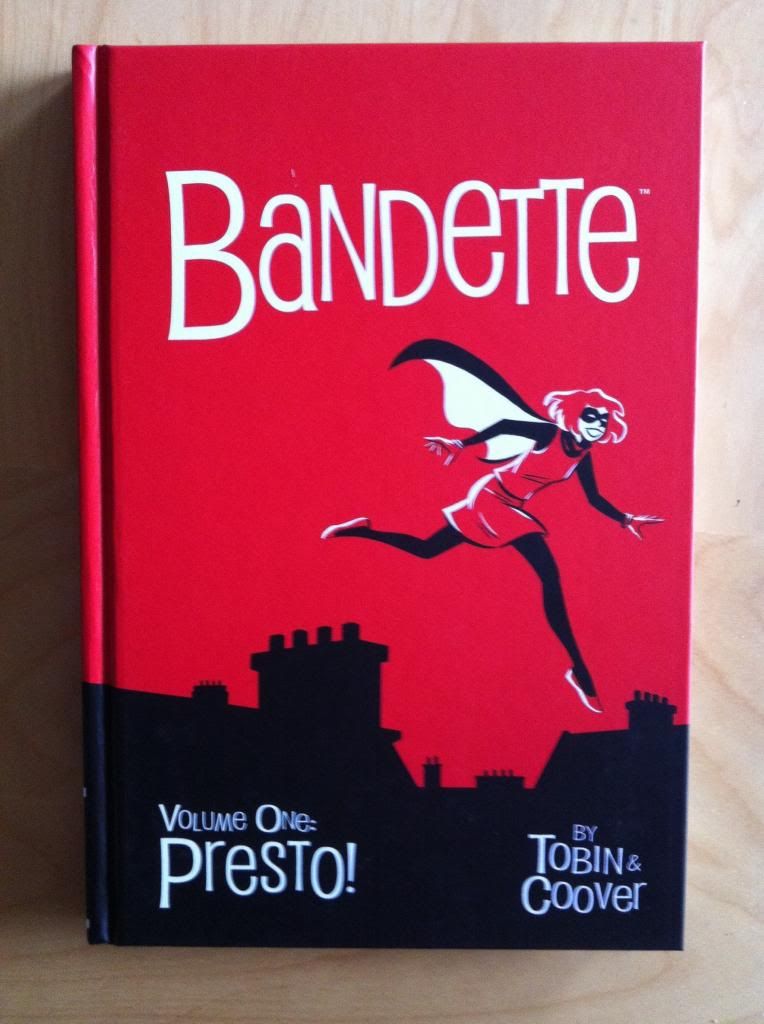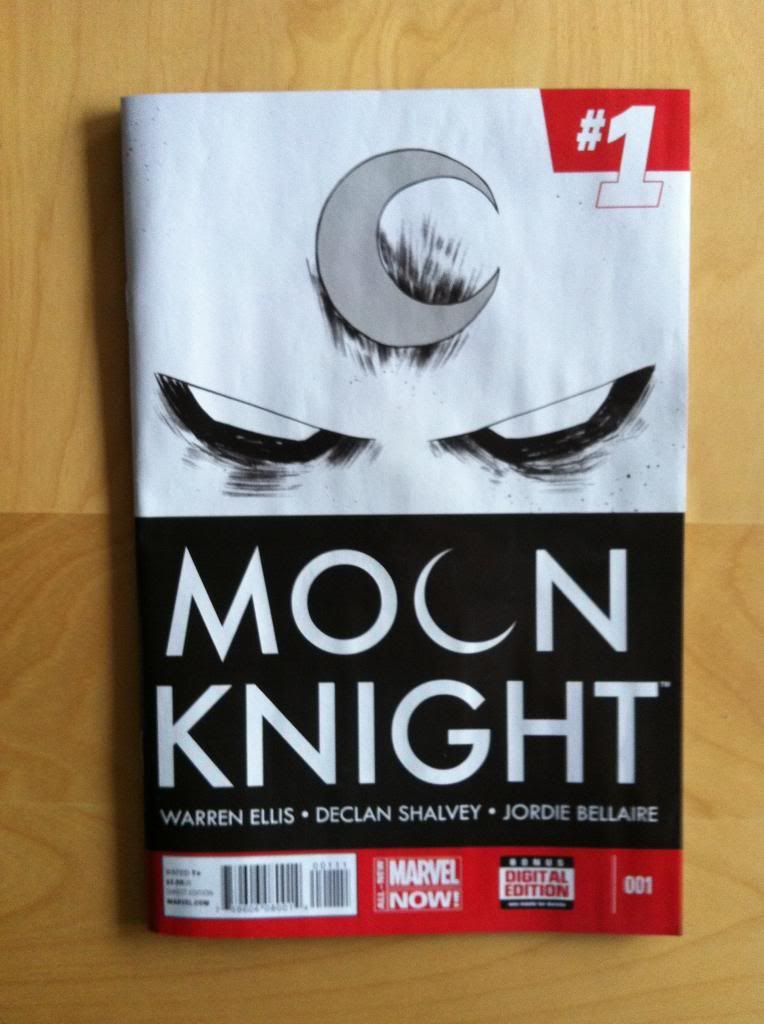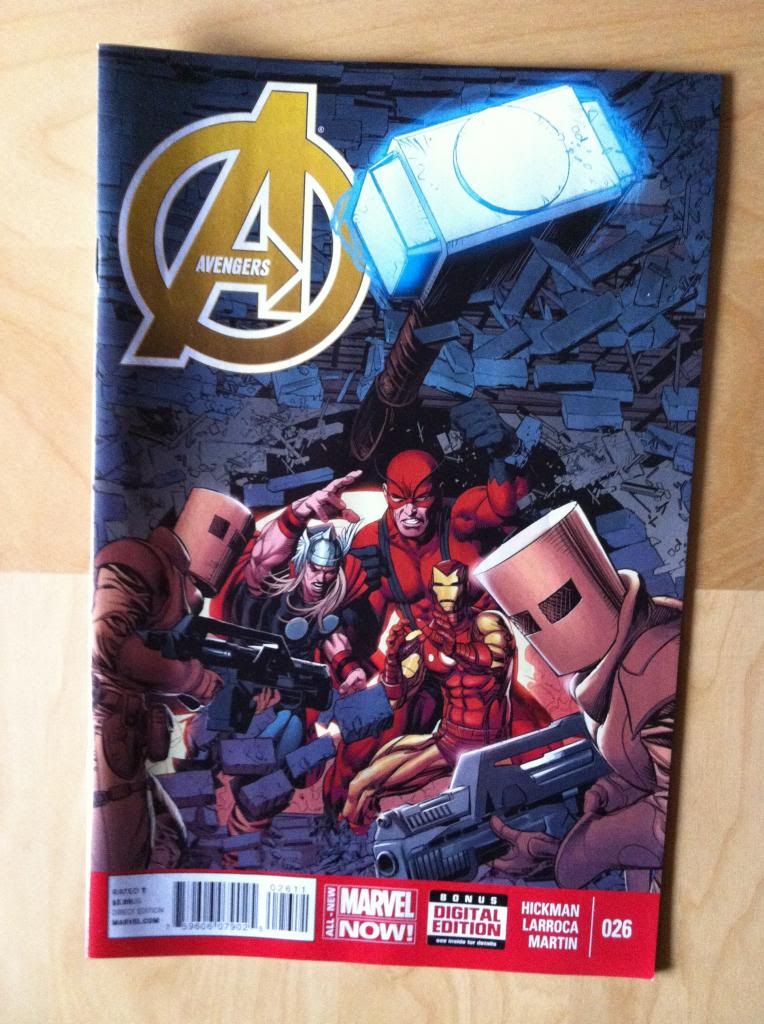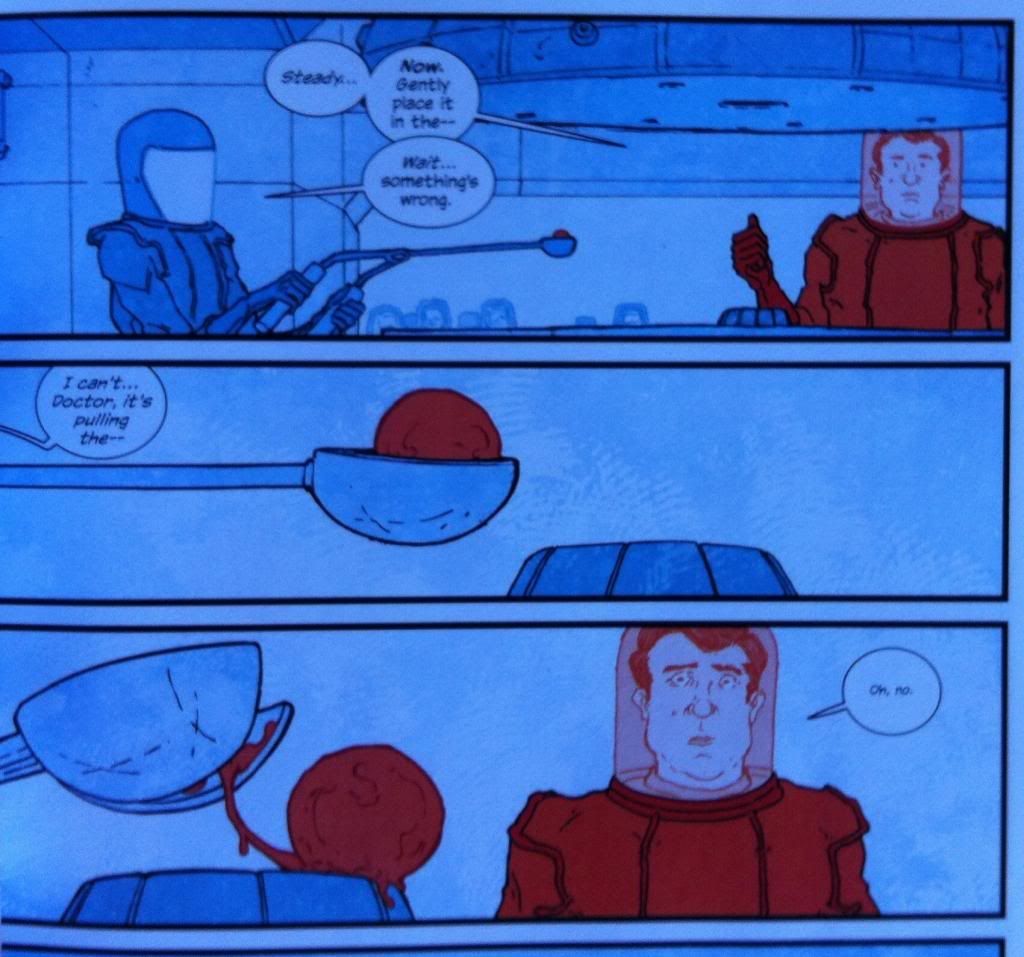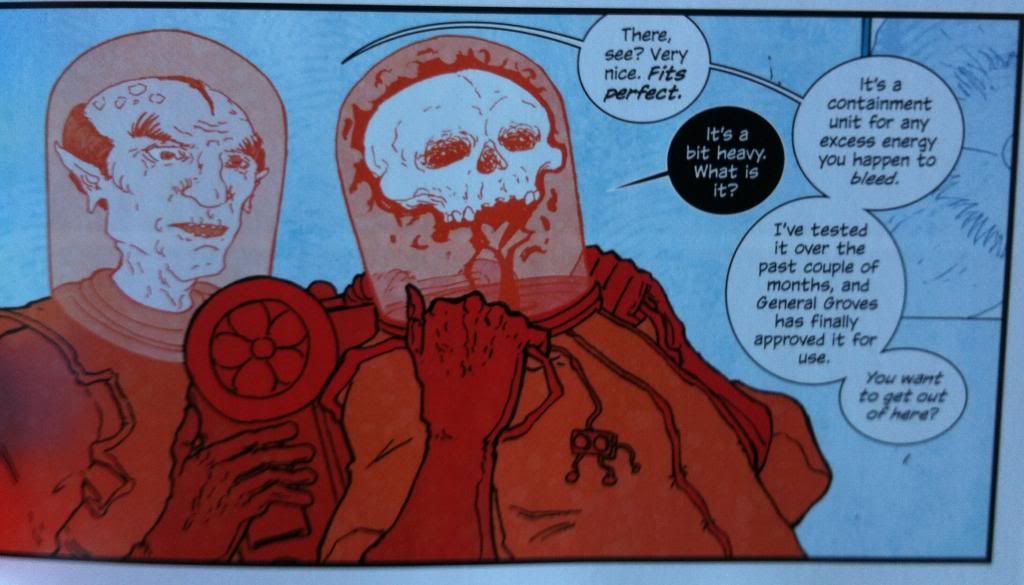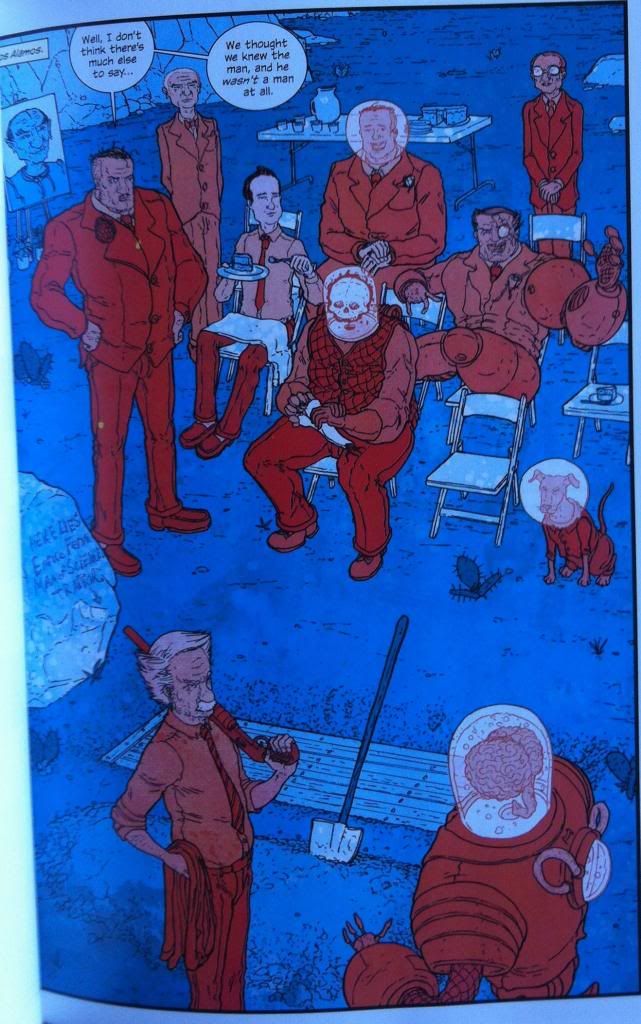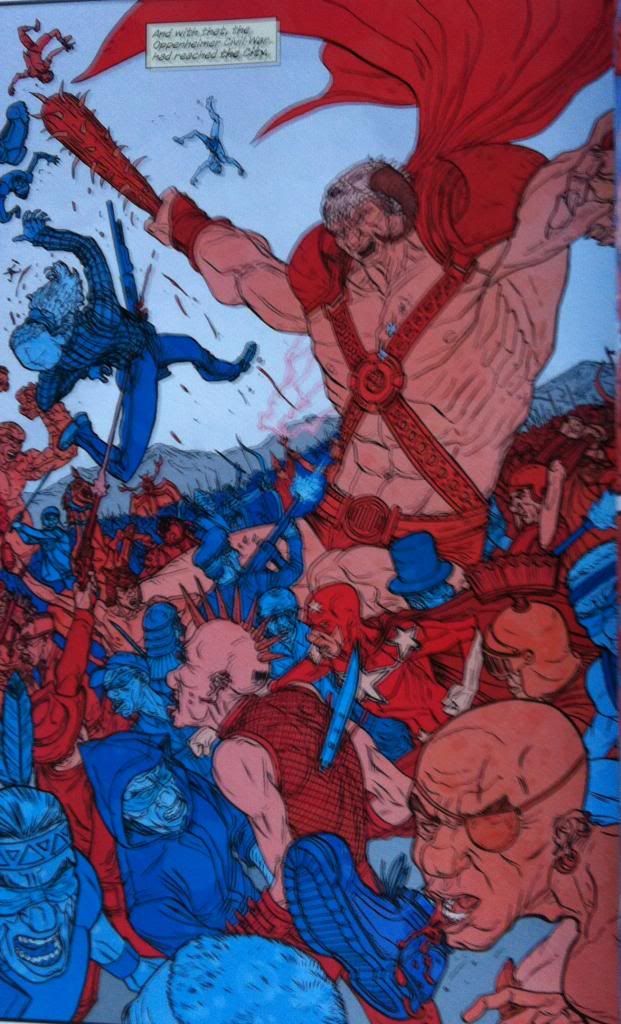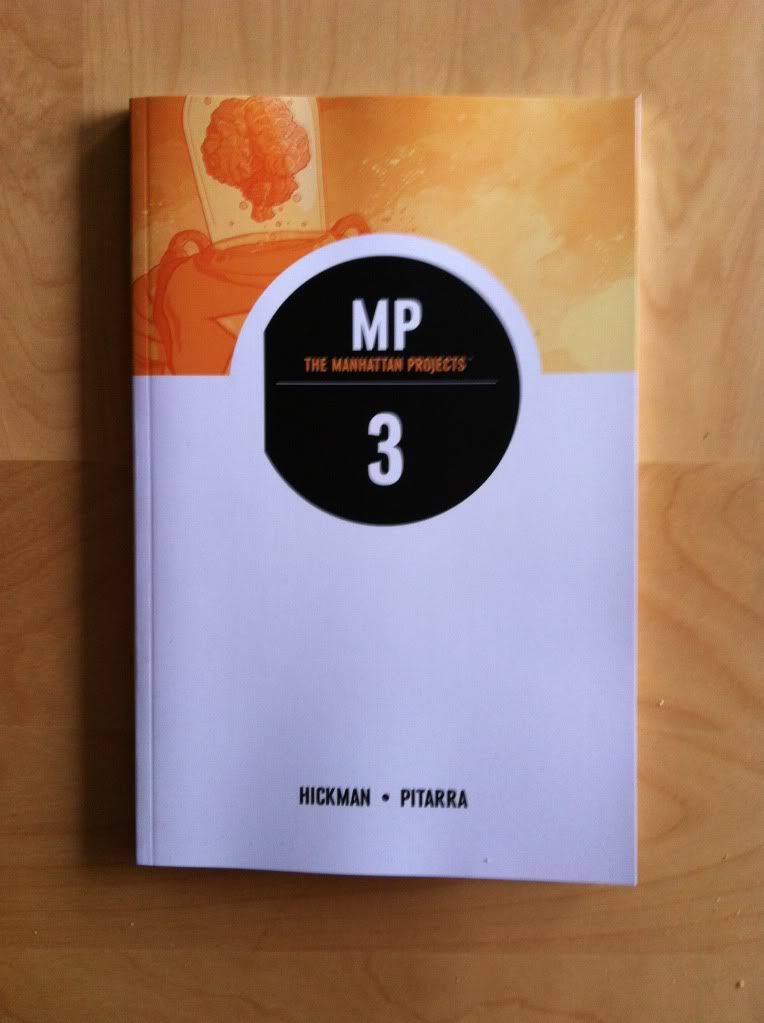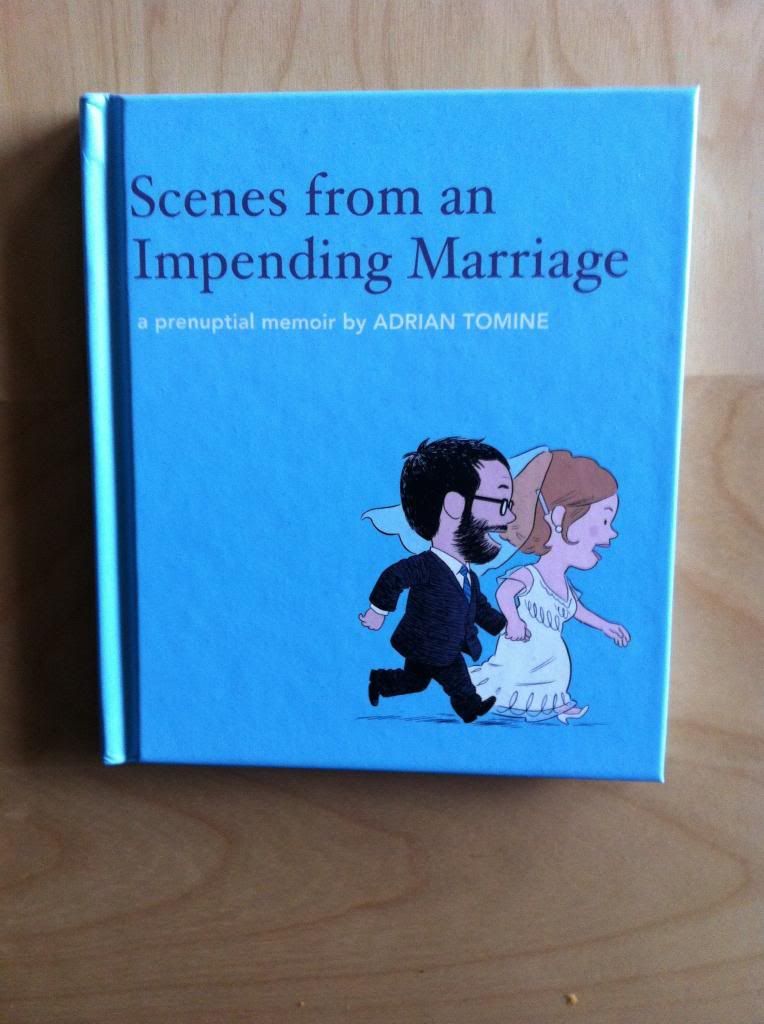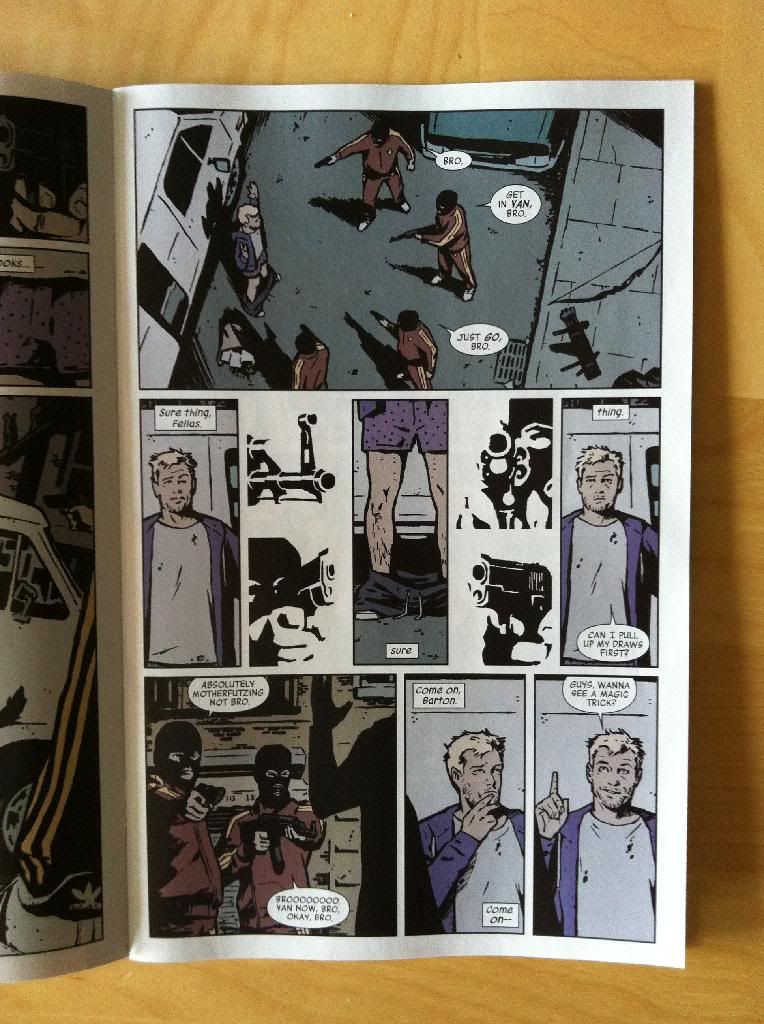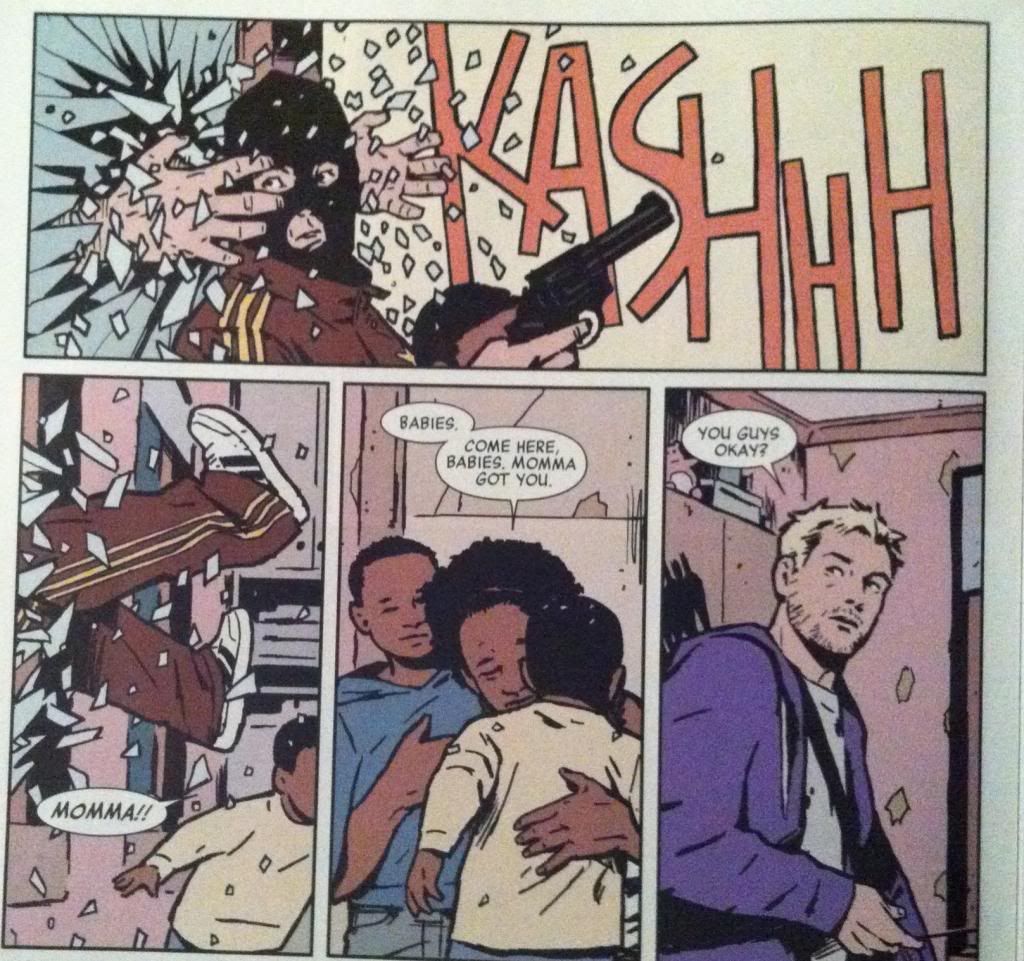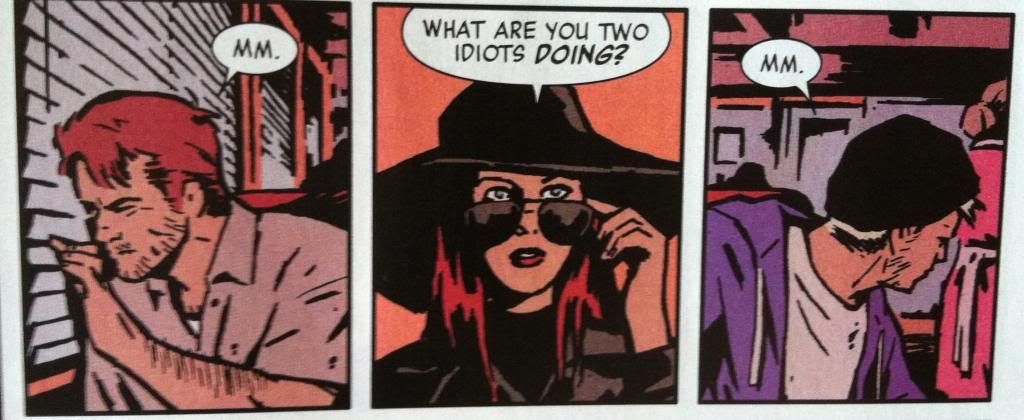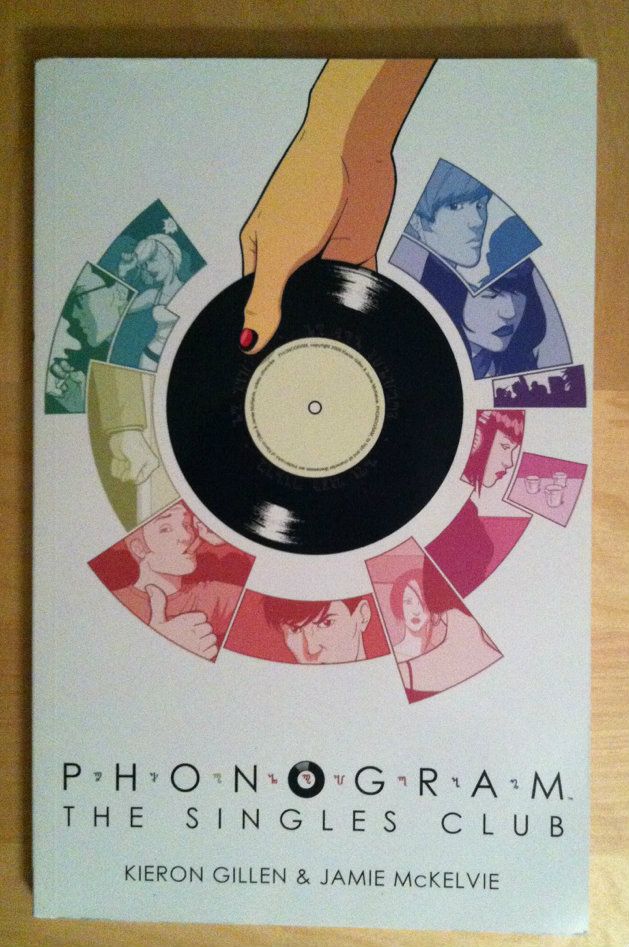by Matt Fraction, Annie Wu, and Matt Hollingsworth; Marvel Comics
Hawkeye continues to be that dang comic.
I didn't write about Hawkeye #17, the Winter Friends issue because its release date managed to land right in the middle of Busy Times, and because I didn't have much to say about the issue other than it was absolutely tons of fun. I mean, there were a great many interesting parallels between the issue and the series as a whole, but they were obvious and no one likes overtly obvious criticism. (Oh my god, you guys! Steve was TOTALLY Clint!!)
Fortunately for my purposes, Hawkeye #18 is a much more conventional issue of Hawkeye that is pregnat with interesting comics to try and figure out. The thing that struck me most about Hawkeye #18 was just how dense an issue of comics it was: it took substantially longer to read than an average super hero comic. Hawkeye #18, I think, gets its density from both a higher than normal panel count (a hallmark of the Hawkeye series), but also by the sheer number of settings in the issue. Seriously, over 20 story pages Hawkeye #18 has at least 13 discreet settings (and that's being stingy and not counting all of the flashback scenes or in-transit sequences as settings.) This is a lot of settings!
The thing about a comic with so many locations is that there is the potential for the entire beast to be one confusing mess. But Team Hawkguy is really great at making ambitious comics work through studious attention to detail. To solve the problem of multiple settings in a relatively short comic book, Team Hawkguy leverage work done in previous issues by revisiting, in part, some familiar settings. There is also,of course, the clear storytelling of the Wu/Fraction collaboration and the simple fact that every setting is smartly designed and drawn well. But to me, maybe the most interesting way Team Hawkguy effortlessly encodes information about multiple settings is in the colouring of the issue.
There will of course be *SPOILERS* for Hawkeye #18 throughout this post.
One of the main ways Hawkeye #18 managed to seamlessly juggle so many settings discrete settings and handle characters moving from one location to another was through the use of lighting. Every setting, very nearly, had its own discrete lighting which which affected the tone of every colour in the effected composition. This is just a random sampling, but there is the bright, artificial lighting of the grocery store, the semi-dark lighting of an unlit apartment in chaos, the glaring white brilliance of bathroom lighting, the warm glow of being at the beach in direct sunlight, the dark blue shadow of being outside at night, and the gentle lighting of a tastefully lit restaurant. Each of these scenes looks and feels different, despite the same character colours (Hawkeye is always purple), making each place visually and emotionally distinct. Furthermore, changes in lighting, and particularly shadow, really help keep character location straight as the darkness of the LA night makes it very clear when characters leave one location and move to another. Hawkeye #18 is a masterclass in how effective and thoughtful lighting effects in colouring can convey a huge amount of information about setting.
Hawkeye #18 also leverages colour directly to help solidify each setting as a discrete location. Many of the key scenes have a distinct colour palette that makes each feel unique. Kate's trailer is coloured in tones of purple, since everything Hawkeye must be, while the scary mansion is rendered in blacks and shadowy blues. The bathroom is white-white-white while in the flashback sequences the LA skyline is a sunset, nostalgic orange, hollywood parties are opulent red, purple, and pink, and the beach is a study in tan-yellows and skyblues. Even at a cursory inspection, like in the selection above, each of these settings is clearly different and unique both visually and emotionally. Clearly, say, the dark and creepy mansion is in a different physical space and story location than the swank, fancypants Hollywood party. It's great stuff.
(For sake of argument, think about a Batman comic. I love Batman, but when it comes to setting, Gotham is usually rendered universally as this dark, black and blue, urban landscape that heavily features shadowed lighting. It often feels like this looming, monolithic space of indistinct urban-ness, fear, and violence. Which I think often makes Gotham seem less like a place and, maybe intentionally, more of an indistinct nightmare land. Hawkeye, with this smart use of tying colours to locations, feels much more real and diverse in the spaces visited. Which is a choice so subtle that, I think, it's easy to miss: colouring, when done well, is this permeating invisible thing that can drive so much storytelling.)
Hawkeye #18 also has some great exampls of colouring as a storytelling device that go beyond establishing setting. In the top selection the way colour is dropped in the second panel suggests, with no words or artwork to support it, that Hawkeye is focussing on making a tricky arrow shot. The colour, and the world, fall away for a moment of aiming and we the audience understand the story message of the panel based solely on the colouring information. The second selection works this way too: we see the red and blue glare of rollers and understand that our heroes have been stopped by the LAPD. This is again based solely off colouring information, since we never actually see a cop car drawn in any of the preceding or subsequent panels in this sequence. Which is just more evidence that effective colouring choices can be a fantastic storytelling tool.
Hawkeye #18 is a treasure trove, I tell ya.
Previously:
Eye on Hawkeye #15: Composition, Layout, and colours.
Eye on Hawkeye #16: Smart layouts and chilling moods.
Eye on Hawkeye #14: Repetitive panels as a device.
Eye on Hawkeye # Annual Pt. 1: Using silhouettes in arguments
Eye on Hawkeye #12: Setting up the perfect splash page
Eye on Hawkeye #12: Setting up the perfect splash page
Eye on Hawkeye #11 pt. 2: Lucky & Clint, Narrative Similarities
Eye on Hawkeye #11 pt. 1: A Dog's Perspective
Eye on Hawkeye #10: Colours and Mood
Eye on Hawkeye #11 pt. 1: A Dog's Perspective
Eye on Hawkeye #10: Colours and Mood





